Related Tags
Six iconic guitars from punk rock history
From blue-collar classics to pawn shop finds and bitsa guitars, these are the most important and iconic instruments from punk’s history.
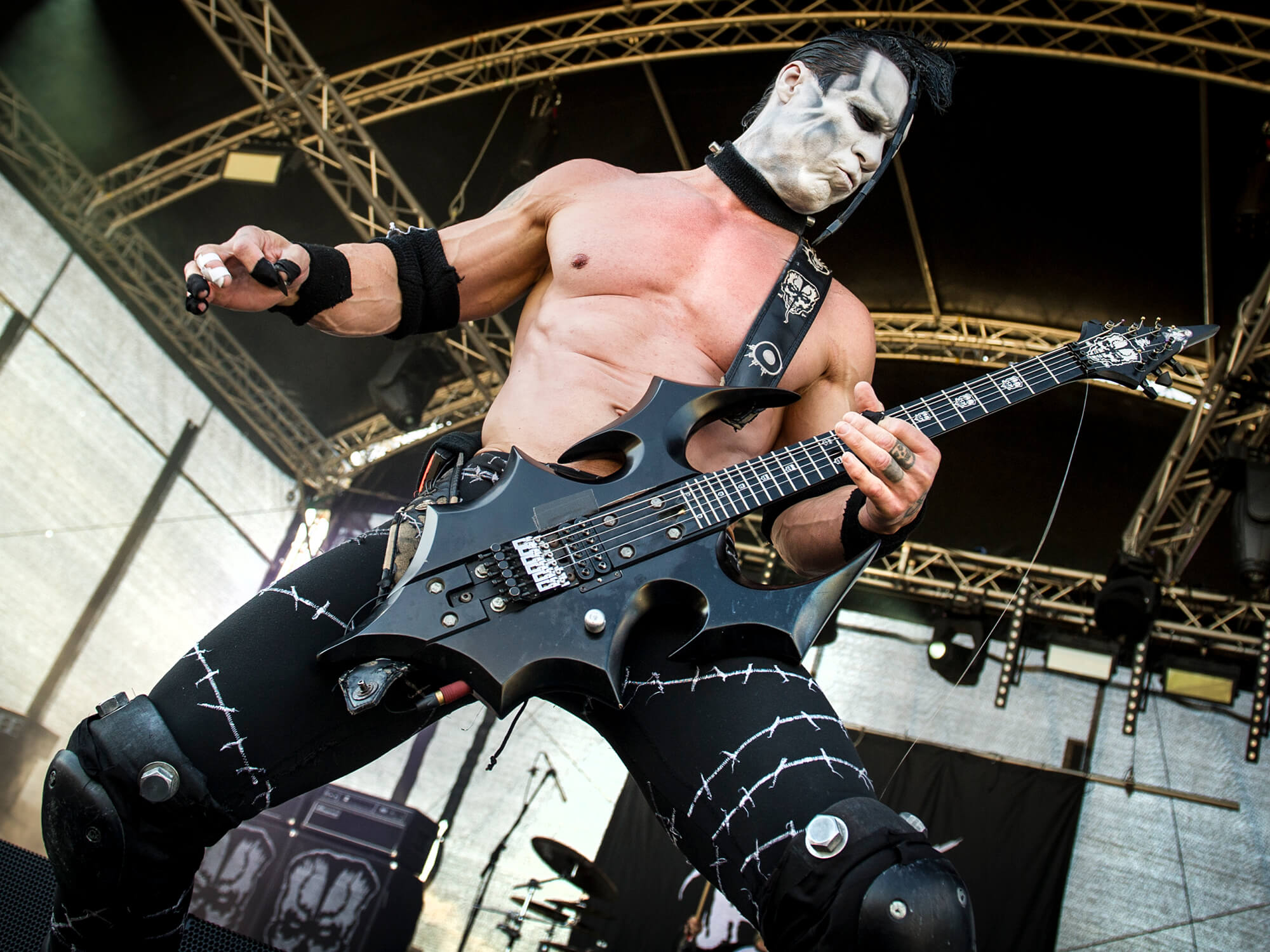
Doyle Wolfgang von Frankenstein of Misfits. Image: Katja Ogrin / Redferns
Punk rock was unlike any movement that had come before in the history of guitar music, and so it’s perhaps fitting that the instruments used to define the fire and the fury of punk are wonderfully diverse and in many cases, unconventional.
These guitars often had backstories and attitudes to match the music that came out of them and embodied the DIY ethics, moral ambiguity, and sonic outrage that defines the punk spirit.
Johnny Ramone’s Mosrite Venture Model II
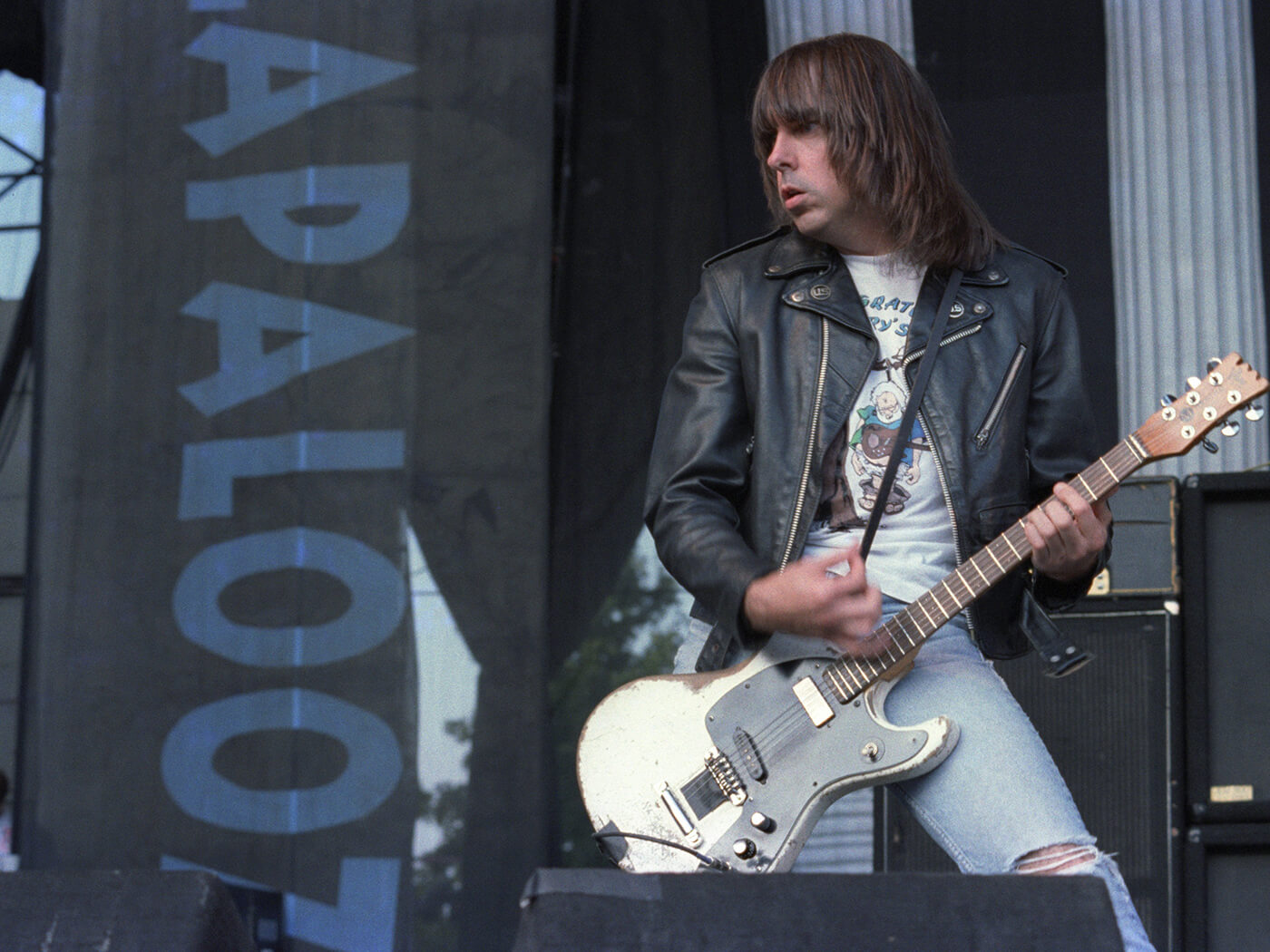
Production of Mosrite Venture models was funded by the popular band The Ventures in exchange for exclusive distribution rights. Although the guitars were a popular model for Mosrite, they didn’t come close to matching the popularity of Fender or Gibson guitars. The Venture II was available in a German Carve version and a rarer, more collectable, slab version, which was only made for a few months in 1965 – only around 100 to 150 of these slab models were ever made before Mosrite decided they looked too cheap, so they started adding the German Carve. Johnny Ramone owned nine Mosrites through his career but his #1 was a white slab Venture II. As Johnny himself explained,
“I bought a Mosrite because it was the cheapest guitar in the store. Now I’ve gotten used to it and I like it. I also didn’t wanna get a guitar that everybody else was using – I wanted something that could be identified with me.”
While they started out as the cheapest option at the time, of the nine Mosrite guitars that Johnny owned, one sold at auction in 2015 for $71,875 and his main white slab Mosrite just sold in 2021 for $937,500.
Doyle Wolfgang Von Frankenstein’s “Annihilator”
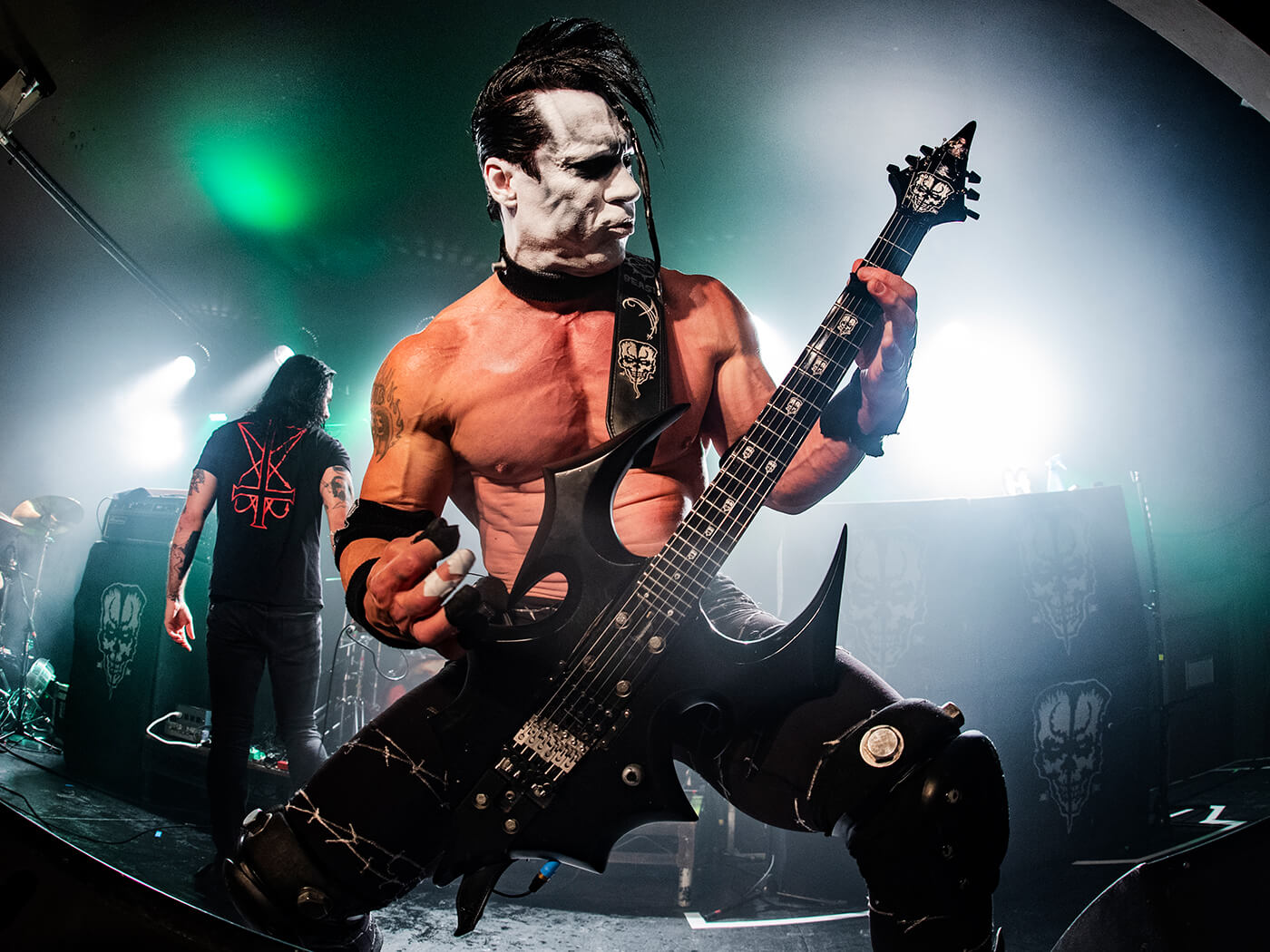
Punk rock has always been exemplified by a healthy DIY ethic, so it makes sense that at least one guitar on this list should be a homebuilt axe. This guitar was built by Misfits guitarist Doyle in a shop in the late 80s/early 90s. It features a graphite neck-through design. The wings of the body are currently made of mahogany. The graphite makes the body quite heavy but, fortunately Doyle is a pretty strong guy. It features a Floyd Rose bridge that has been modified (by Doyle) to be a hardtail – he makes his own plate that is fixed to the body and uses the saddles from the Floyd Rose. It was completely hand-built with no CNC machines at all. Doyle also builds his own speaker cabinets.
Oktober guitars made a run of Annihilator replicas and Doyle has recently been in talks with Dean to make a larger production run of the Annihilator, in fact, the last time I spoke with Doyle, the guitar had been at Dean’s shop for nearly a year. Although a production run of this guitar is entirely possible, it may not happen anytime soon.
Steve Jones’ 1974 Les Paul Custom
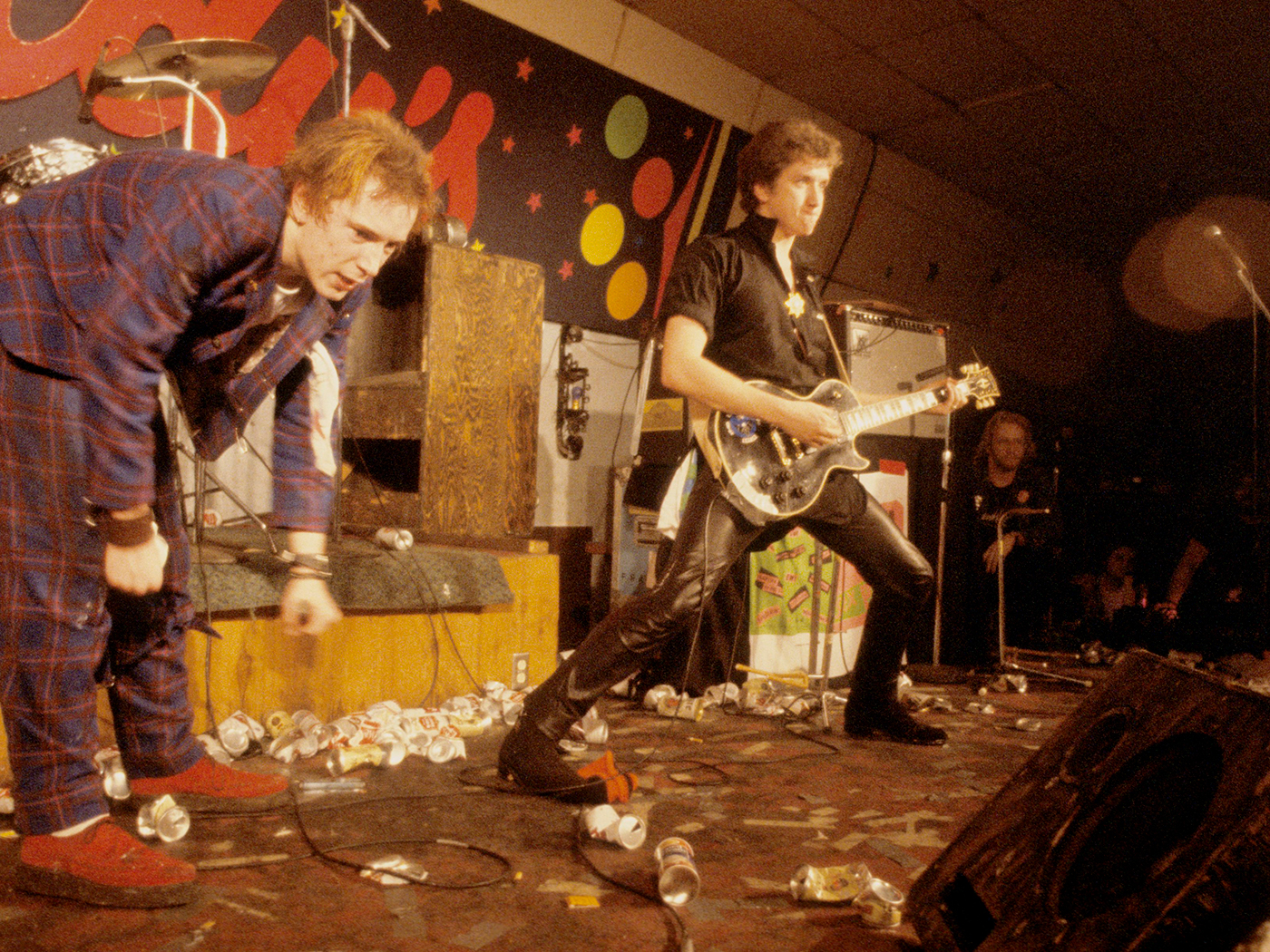
Sex Pistol Jones was famously light fingered and much of his gear was lifted from other artists when he would go see bands at the Hammersmith Apollo. A Twin Reverb amp was taken from a reggae band that was opening for Bob Marley and was used on the Sex Pistols’ Never Mind The Bollocks. Both of Sid Vicious’ white P-Basses had been stolen by Jones. He also stole gear from David Bowie. Steve Jones’ most iconic axe was a 1974 Gibson Les Paul Custom was obtained from Sylvain Sylvain of the New York Dolls, but interestingly enough, it wasn’t stolen by Jones.
As for the Les Paul, McLaren alleges he took the guitar as payment for [mis]managing the Dolls during their later years, brought it back to England, and gave it to Jones. During Sylvain’s ownership of the guitar, it featured a Bigsby vibrato that was later removed – stickers of pin-up girls were added to the guitar to cover the screw holes from the original Bigsby. This became Jones’ No 1 guitar for the duration of his career.
The guitar went missing after the Pistols’ 1978 tour of the US but turned up decades later in the hands of a US based guitar collector no longer sporting the iconic pin-up stickers. In 2008 Gibson did a limited Custom Shop production run inspired by that guitar. It is not the only guitar Jones owned that previously belonged to Sylvain. A Gretsch White Falcon that Sylvain owned found its way to Joe Strummer, then to Jones, who sold it to Phil Lynott for “a bag of dope” and it currently resides at the Lynott Museum in Ireland.
Joe Strummer 1966 Telecaster
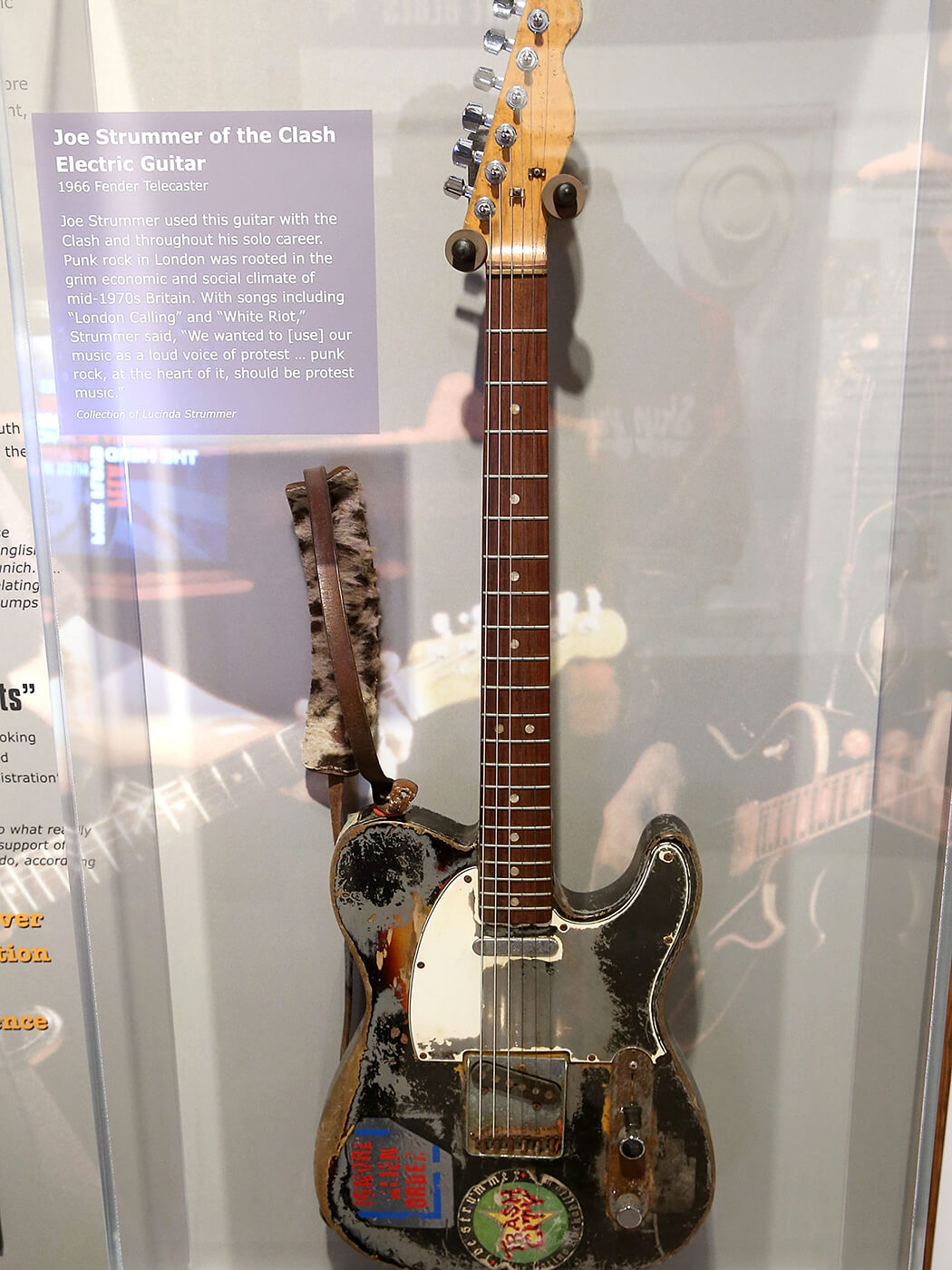
“That black Tele is on every record and every show I have done,” the Clash icon once said. “It’s got like a library stamp that says the 5th of August 1968 on the back of the neck.”
Strummer’s iconic Telecaster is actually a 1966 model [though the neck may have been a ’68] and it came into the possession of Strummer in 1975 for the modest sum of £120. The guitar originally wore a sunburst finish but in 1976, Strummer brought it to an auto body shop and the body and pickguard were sprayed with black equipment enamel.
One story alleges that shortly after Joe’s passing, that a wealthy Japanese man attempted to purchase the guitar from Strummer’s wife for over a million pounds. The guitar was a vessel for Strummer’s commanding songwriting. Strummer used no effects, just a beaten old Telecaster going directly into an amp. Strummer used a Fender Twin Reverb until 1979 and after 1979, a Music Man HD-212 150W.
Due to the beatings the guitar would take at the hands of Strummer, the band was always on the lookout for another guitar that could work as a replacement so that Strummer could retire the ’66 but no other guitar could ever measure up, so the ’66 functioned as Strummer’s weapon of choice until his untimely passing in 2002 at the age of 50.
Although it remains speculative what Strummer would have thought of a relic’d signature run of his favorite guitar, in 2007, Fender started making Joe Strummer Signature Telecasters based on the ’66. This production run ran through 2009 and the first 1,500 of them came with stencils and stickers to replicate Strummer’s accoutrements.
Billie Joe Armstrong’s Fernandes Strat
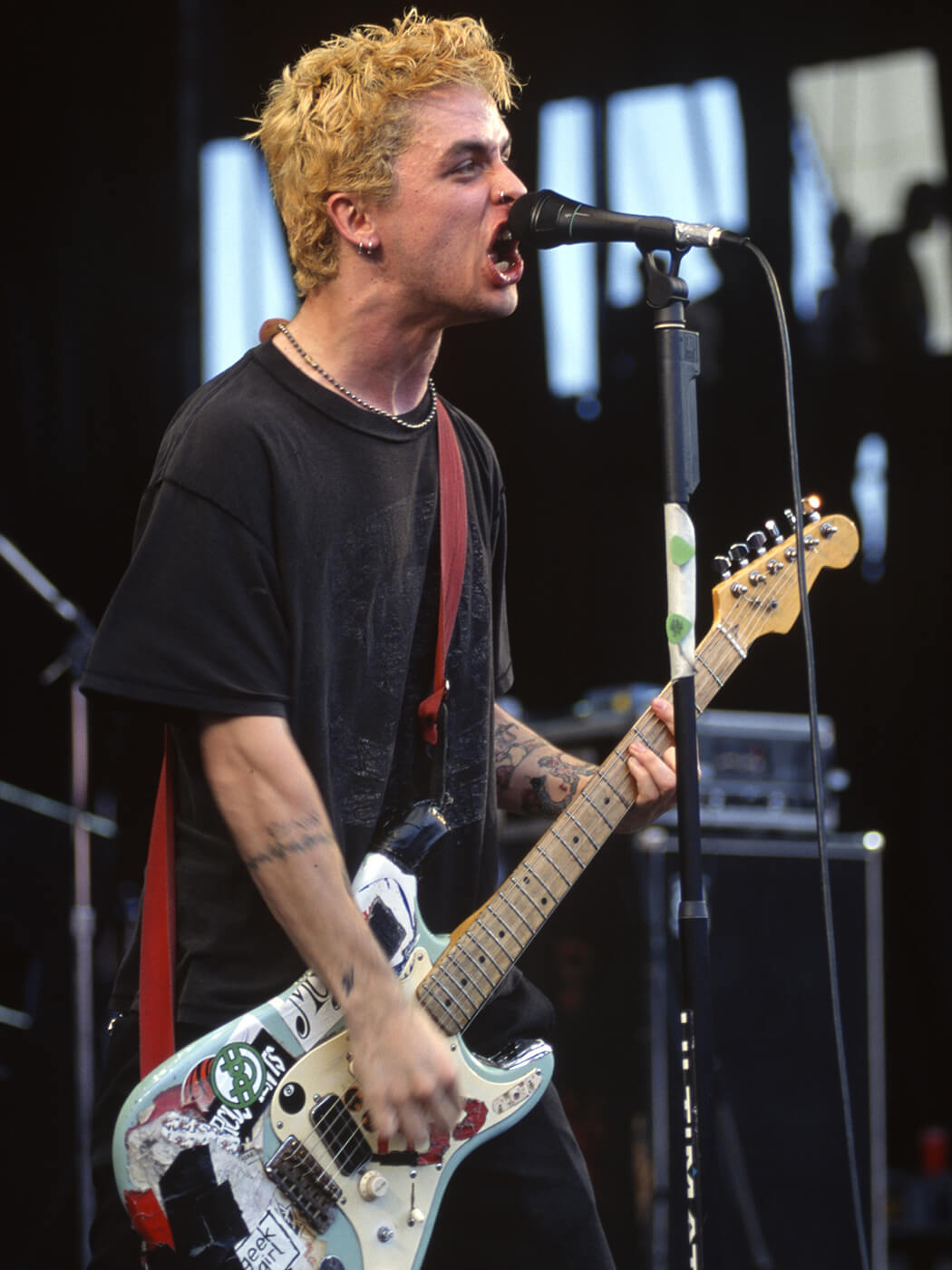
These days, Green Day frontman Billie Joe Armstrong has a line of signature Les Paul Jrs, but even with all the sparkly new guitars at his disposal, Billie still reaches for old Blue. Blue is a Fernandes Stratocaster Copy that Billie received for his 11th birthday – his first guitar. His mother bought it from a local guitar instructor, George Cole, who was Billie’s guitar instructor in his formative years.
Allegedly, George got the guitar from David Margen, who was a bass player Santana’s band from 1977 until 1982. A Bill Lawrence Humbucker was fitted into the bridge position and remained there until it fell victim to an epic mud fight during the band’s performance at Woodstock in 1994. After that, it was replaced with a Seymour Duncan JB. The bridge pickup is conspicuously slanted, reminiscent of Eddie Van Halen’s Frankenstrat or Kurt Cobain’s Jag-Stang.
Many Fernandes guitars of that era were made from Silver Heart wood that was often recycled from used bowling alley planks. Japan experienced a big bowling craze in the early 70s, but when the craze faded and the bowling alleys went bankrupt, the wood was snatched up by opportunistic companies like Satio, the company that made Fernandes guitars. The planks were thin, which meant they had to be pancaked to get to the proper thickness – its not an uncommon practice – let us not forget that even Gibson Les Pauls were laminated in this way during the Norlin Era.
In spite of his signature Gibsons, Billie Joe still brings Blue on tour and uses it in the studio on occasion.
Brett Gurewitz’s Red Rocker

Bad Religion is one of punk rock’s most enduring and revered bands. Founding axeman Brett Gurewitz has used a lot of different guitars in the studio over the years, but one guitar seems to pop up in the rotation more than any other, a frankensteined monstrosity he dubbed The Red Rocker.
“Over the years I’ve had a lot of guitars,” he told us a long time ago. “My favorite guitars over the years have been Les Pauls, but I’m probably most noted for playing this thing I call the Red Rocker guitar. The Red Rocker is a bit of a monstrosity. I was on tour in the early 80s and my Les Paul was stolen, and I had to find something quickly. So I found a cheap Charvel at a shop in Boston. That’s where the Red Rocker started. It now has a Charvel body, an ESP neck, a Fender bridge, and Seymour Duncan JB pickups. I’ve played it a lot over the years and it is now covered in stickers. So that’s what people see me playing a lot.”
The Red Rocker has been used, to some degree, on every Bad Religion album. It is sort of an unofficial mascot for the band – a lovable misfit that embodies.
For more features, click here.
